Episodes
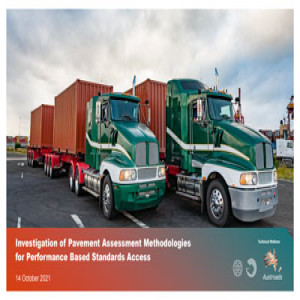
Thursday Oct 14, 2021
Investigation of Pavement Assessment Methodologies for PBS Access
Thursday Oct 14, 2021
Thursday Oct 14, 2021
We rely on road freight transport to keep Australia’s economy moving. Performance Based Standards (PBS) vehicles, that are typically longer and heavier, do this work more efficiently but how much road damage do they cause in the process?
This webinar, presented by Anthony Germanchev, Georgia O’Connor and Angus Draheim, explores the methods used by road managers to answer this question. It proposes a framework to support consistent approaches to understanding and comparing the pavement impacts of PBS vehicles. Some of the key steps government agencies are taking to support road managers in assessing PBS vehicles for network access are also outlined.
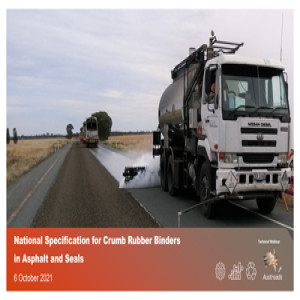
Wednesday Oct 06, 2021
National Specification for Crumb Rubber Binders in Asphalt and Seals
Wednesday Oct 06, 2021
Wednesday Oct 06, 2021
Australia and New Zealand produce about 510,000 tonnes of end‑of‑life tyres annually. Crumb rubber derived from end‑of‑life tyres has been used in Australia for several decades to enhance the performance of binders used in sprayed seals but prior to 2017 the use of crumb rubber in asphalt pavements was limited.
Due to the lack of crumb rubber binder grades suitable for use in asphalt in the Austroads national polymer modified binder (PMB) specification (ATS 3110), two Australian jurisdictions and the Australian Flexible Pavement Association recently developed specifications for crumb rubber binders for use in asphalt which were based on tests and testing protocols used in Arizona and California.
This webinar, presented by Robert Urquhart, focuses on the outcomes of an Austroads research project which investigated whether the crumb rubber binders that were trialled in asphalt could be specified in terms of the tests and testing protocols used to specify other types of PMBs in the Austroads national PMB specification. Specification requirements have also been proposed for a binder containing 9% crumb rubber by weight which could be used in sprayed sealing applications.
The webinar also discusses the results of laboratory asphalt performance tests which investigated the effects of the amount of crumb rubber in a binder on asphalt performance.

Tuesday Sep 28, 2021
Data to Support the Heavy Vehicle Road Reform
Tuesday Sep 28, 2021
Tuesday Sep 28, 2021
Austroads has recently published the final report for the three-year project Data to Support the Heavy Vehicle Road Reform, which has investigated a number of different aspects of the requirements, gaps, and opportunities for supplying infrastructure data suitable for supporting a future heavy vehicle cost recovery and investment process. It represents a total of seven years of work from 2013 to 2020.
The project explored issues related to the supply of data on freight routes required by the Heavy Vehicle Road Reform. This included: how to measure the level of service (LOS) of freight routes, mechanisms for obtaining nationally harmonised data about road assets, and providing insight into the nature, quality and consistency of road-related data across Australian jurisdictions.
This webinar, presented by Ulysses Ai, provides a summary of the project’s main activities and key learnings including:
- Development of the Heavy Vehicle Infrastructure Rating as a concise measure of LOS for freight routes.
- Development of the National Asset Register and learnings from processes seeking to obtain asset data from local governments.
- A study of candidates for a national base map for road-related data and guidance on subsequent processes for data-matching.
- An analysis of inconsistencies in traffic data.
- Investigation of practices across Australian jurisdictions for expenditure reporting data, pavement deterioration modelling, and maintenance data records.
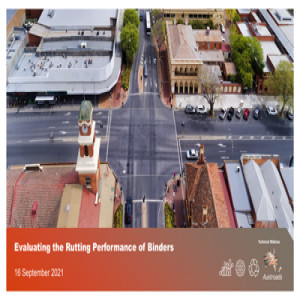
Thursday Sep 16, 2021
Evaluating the Rutting Performance of Binders
Thursday Sep 16, 2021
Thursday Sep 16, 2021
Asphalt pavements are a major component of the Australian and New Zealand road networks. Road agencies in Australia and New Zealand have been putting great efforts to produce pavements which perform and are long-lasting. This has led to the development of national specifications to ensure materials of suitable quality are used for road construction.
Austroads ATS 3110 is used as a national performance-based specification for polymer modified binders (PMBs). The specification includes the consistency 6% (at 60 °C) property to evaluate the relative performance of a binder to resist rutting, as it is one of the major failure modes of asphalt pavements.
Consistency 6% tests are currently conducted using the elastometer instrument that was developed in Australia specifically for these tests. This instrument, however, is no longer being manufactured and the supplier is no longer providing technical support for existing instruments. A new test method has therefore been developed to determine consistency 6% properties using a dynamic shear rheometer (DSR) rather than the elastometer. The DSR is widely used to test bituminous binders and other materials across the world.
Presented by Young Choi, this webinar details the outcomes of the Austroads research project which was conducted to develop the DSR consistency 6% test method. The project work included an extensive literature review, equipment investigations, optimisation of test procedures and validation studies using many different types of binders. These studies were conducted to ensure that the new DSR test method is equivalent to the current elastometer test method.

Tuesday Sep 14, 2021
Supply Chain Benchmarking Dashboard
Tuesday Sep 14, 2021
Tuesday Sep 14, 2021
Comparing the movement of commodities, domestically and internationally, helps to identify potential action areas to support Australian supply chain efficiency, competitiveness and resilience. As part of the Commonwealth international benchmarking project, the Supply Chain Benchmarking Dashboard was developed as a joint initiative between CSIRO and the Department of Infrastructure, Transport, Regional Development and Communications (the department).
The dashboard is planned for release in the second half of 2021, and provides modelling and insights on Australian supply chain performance to:
- support data-led decision-making to inform policy, investment and operational outcomes for government and industry
- provide a national picture of supply chain performance across a wide range of metrics, commodities and regions
- provide a comprehensive evidence base for international comparison.
This webinar demonstrates how users will be able to compare supply chain metrics across commodities, different transportation paths or segments in supply chains (e.g. producer to distributor, or distribution centre to port) and in different regions or locations (currently LGAs, states and territories).
The dashboard displays aggregated outputs from the Transport Network Strategic Investment Tool (TraNSIT) – a computer modelling tool developed by CSIRO that performs mass optimal routing of vehicle movements between thousands of enterprises. For each origin/destination enterprise pair, the model selects the least-cost travel path as well as the optimal vehicle configuration, allowing for road access and conditions, driver fatigue regulations and vehicle decoupling costs. The model outputs information on freight paths as well as detailed transport costs. Following release of the first iteration, stakeholder engagement is planned to gain feedback to further refine the model to best meet the needs of users.
Presented by CSIRO’s Senior Scientist Andrew Higgins and Ross Slater, Assistant Director at the department’s National Freight and Supply Chain Strategy Implementation Unit.
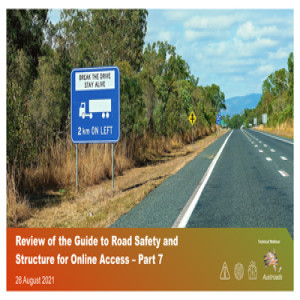
Thursday Aug 26, 2021
Review of the Guide to Road Safety and Structure for Online Access: Part 7
Thursday Aug 26, 2021
Thursday Aug 26, 2021
The Review of the Guide to Road Safety and Structure for Online Access project has updated the Guide to Road Safety with the latest research, primarily from Austroads published material, and restructured the guide for better online access and to allow content to be more easily added in the future.
This is a second webinar in a two-part series to provide an overview on the updated guide. Presented by Kenn Beer, Dr Tana Tan and Johan Strandroth, this session focuses on Part 7, which contains guidance on contemporary approaches to road safety strategy development and road safety management.
The webinar covers the latest concepts and practices in strategy development including target setting, backcasting for scenario building and the use of performance indicators to sustain a results-focused approach to whole-of-road system transformation.
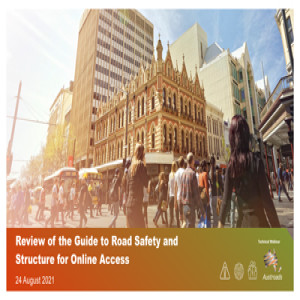
Tuesday Aug 24, 2021
Review of the Guide to Road Safety and Structure for Online Access
Tuesday Aug 24, 2021
Tuesday Aug 24, 2021
The Review of the Guide to Road Safety and Structure for Online Access project has updated the Guide to Road Safety (AGRS) with the latest research, primarily from Austroads published material, and restructured the guide for better online access and to allow content to be more easily added in the future.
The newly updated and restructured AGRS is the first step in delivering a guide to road safety that is easier for readers to navigate and one that aligns with the Towards Zero philosophy. It is a starting point for further improvements and the generation of potential future research projects, especially in the area of Safe Vehicles and Safe People.
This webinar, presented by Dr Tana Tan and Kenn Beer, is the first in a two-part series and it provides an overview of the updated guide. Focusing on Part 1, the session explains how to use the guide and outlines key points for each of the new parts. It also covers opportunities for future research.
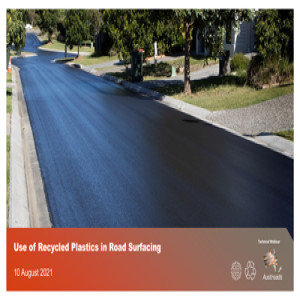
Tuesday Aug 10, 2021
Use of Recycled Plastics in Road Surfacing
Tuesday Aug 10, 2021
Tuesday Aug 10, 2021
The ban on the export of recycled waste plastic by the Australian government has led to interest in the use of recycled waste plastic in road surfacing applications. Austroads has published a report, Interim guidelines for the use of recycled waste plastic in local government road surfacing applications, to assist local government in the use and procurement of road surfacing products incorporating recycled waste plastic.
This webinar, presented by Azeem Remtulla and Steve Halligan provides key information from the interim guidelines, discusses the status of the use of recycled waste plastic in road surfacing applications, the methods for the addition of recycled waste plastic into bituminous binders and asphalt along with limitations on the use of recycled waste plastic and proposes a methodology to the procurement of products incorporating recycled waste plastic.
The webinar also discusses surfacing applications for local council roads and propose a framework for comparing the properties of conventional asphalt to alternative asphalt mixes containing recycled waste plastic. This framework is based on current state road authority (SRA) and local government asphalt specifications and includes proposed tests to compare the performance properties of conventional asphalt against alternative asphalt mixes.
Worked hypothetical examples of the procurement and assessment process for asphalt incorporating recycled waste plastic as an alternative to conventional asphalt are also shared.

Tuesday Aug 03, 2021
Technical Basis of Changes to Guide to Pavement Technology
Tuesday Aug 03, 2021
Tuesday Aug 03, 2021
Austroads has published two technical reports drawing together the research underpinning changes made to key components of the Guide to Pavement Technology.
The reports detail the technical basis for changes made to Guide to Pavement Technology Part 2: Pavement Structural Design and Guide to Pavement Technology Part 5: Pavement Evaluation and Treatment Design.
This webinar, presented by Dr Michael Moffatt and Dr Geoff Jameson, outlines the technical basis of the changes made to Parts 2 and 5 since the last versions of the technical basis reports were published in 2008.
The 2017 edition of Part 2 included improvements to the design of flexible pavements, significant revision to the procedures used to calculate the design traffic, new procedures for the design of pavements with lime-stabilised subgrades and improved methods to predict the in-service fatigue life of cemented materials and estimate asphalt and cemented material design moduli.
The Guide to Pavement Technology Part 5 provides guidance on the selection and design of strengthening treatments to rehabilitate pavements. This is an integral part of managing a road network. The most recent edition of the guide enhanced the design procedure and expanded its use to a broad range of strengthening treatments, including asphalt overlays, inlays, major patchings and stabilisation of pavement layers and subgrade. The procedure is identical to the mechanistic-empirical procedure for the design of new pavements (detailed in Part 2) with the addition of an initial phase which determines the properties of the materials in the road-bed.
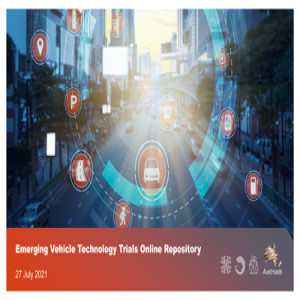
Tuesday Jul 27, 2021
Emerging Vehicle Technology Trials Online Repository
Tuesday Jul 27, 2021
Tuesday Jul 27, 2021
This webinar presents an Austroads online repository of emerging vehicle technology trials conducted by Austroads’ members and private industry around Australia and New Zealand.
The trials capture some of the ground-breaking work and lessons learned to help agencies better focus their research investment and inform policy and strategy decisions leveraging the benefits of emerging technologies and minimising some of the risks associated with them.
Webinar presenters are Andrew Somers who speaks about the repository, its purpose and content, James Soo from the Department of Transport Victoria and Nicholas Brook from the Queensland Department of Transport and Main Roads.
James Soo shares lessons learned from the Advanced Connected Vehicles Victoria (ACV2) trial, CAV Highway Pilot trial and the Omni-Aware Roadside Adaptation of Automated Vehicle LiDAR project.
Nicholas Brook talks about how Automated Vehicles interact with road infrastructure and the Ipswich Connected Vehicle Pilot.

